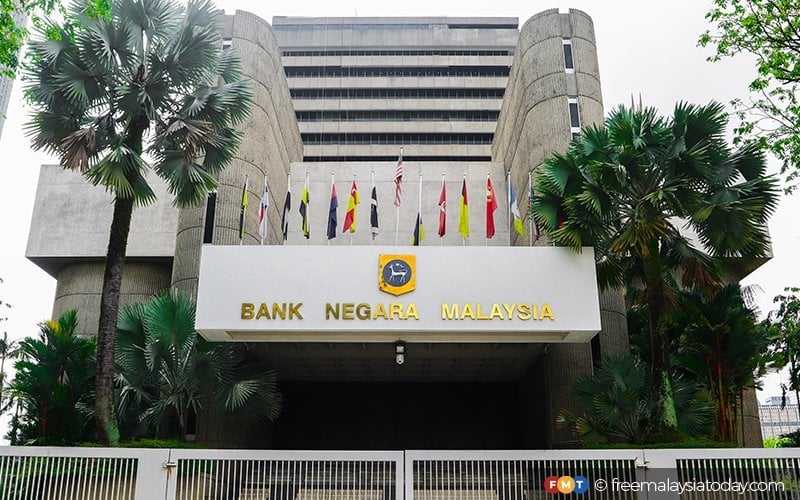PETALING JAYA: Even as Bank Negara Malaysia (BNM) confirmed last week that most Malaysian banks passed its macro solvency stress test, an economist has urged the central bank to ensure such tests take into account possible ‘worst-case’ scenarios. “Although BNM’s macro solvency stress test appears to be robust and up to global standards, the bank stress test process should also be reverse engineered to mitigate for the worst-case scenarios, taking a bottom-up approach,” said Asia School of Business and Cornell University practice professor of finance Joseph Cherian.
He said the problem is that most stress tests are calibrated to most recent or slightly longer-term experience. He highlighted examples such as tech start-up overvaluation that caused the 2000/2001 Dotcom crisis, and the sale of toxic financial assets repackaged as high-quality loans that brought US banks to their knees in the 2008/2009 global financial crisis.
“Certain events which brought ‘infamous’ banks down in the past may not necessarily repeat themselves, but it could be a totally different experience if they do. “What if unemployment hits 10%, or inflation spikes to 12%, or bond yields and credit spreads hit the roof, or liquidity simply dries up? “What happens if contraction is both severe and long lasting – will the same financial institutions continue to remain resilient?” Joseph asked, alluding to a doomsday or “perfect storm” scenario where all the above happens at once.
BNM carried out the macro solvency stress test in early 2023 to evaluate the resilience of Malaysian financial institutions, covering a three-year horizon up to end-2025. Under the first adverse scenario (AS1), it assessed the resilience to temporary severe disruptions in the operating environment, such as a sharp contraction in the economy, by a magnitude larger than during the Covid-19 pandemic.
The second adverse scenario (AS2) tested the banks’ ability to weather a prolonged economic slowdown, with negative gross domestic product (GDP) growth in 2023 and 2024, before mild recovery in 2025. BNM found that only two banks out of 54, which account for less than 1% of total banking system assets, were projected to breach the minimum regulatory capital requirements under these adverse scenarios.
The vast majority (over 80%) of banks would be able to maintain capital ratios above their internal capital targets, although 24 out of 54 banks, with a cumulative share of 25% of total banking system assets, would report losses in at least one year throughout the stress horizon. “Without casting aspersions on the stress test in place nor our banks’ resiliency, we should not rule anything out when designing stress tests for different – and perhaps unique – financial institutions,” said Joseph.
However, Center for Market Education CEO Carmelo Ferlito said instead of focusing on the banking system’s resilience, Malaysians should be concerned about improving financial literacy and the reasons why the household debt to GDP ratio is among the highest in the region. Ferlito said many analysts have failed to observe that the current crisis in the US, like the one in 2008, is not a banking crisis.
He explained that the effect on the banking sector is just the final point of a deeper economic crisis which was fuelled by too-low interest rates in the wake of the Covid-19 lockdowns that incentivised hazardous economic activities, and the credit crunch due to inflation generated by quantitative easing. Nevertheless, he opined the Malaysian banking regulatory framework is quite stringent.
Banks stress testing themselves Joseph said ever since the Asian financial crisis of the late 1990s, financial institutions in Asia, particularly in Malaysia and Singapore, have ramped up risk management practices monitoring and control. However, they should not rest on their laurels. Apart from the regulator’s stress tests, banks should design additional risk management tests as they know their books best.
“Banks should have a well-trained and well-intentioned risk management unit in place which understands its balance sheet intimately and is capable of designing appropriate and (stringent) stress tests,” he said, adding that for their own good, the risk management department should design orthogonal tests. “(In contrast to) BNM’s systemic risk stress tests, orthogonal tests are unique to the individual bank’s balance sheet,” Joseph said.
He said an orthogonal test instituted by the bank could be an adverse event affecting a concentration of depositors and/or financial assets in the bank’s books due to the nature or geography of its business. He suggested that such a test could have highlighted the risks faced by the failed Silicon Valley Bank (SVB) given its preponderance of tech assets due to it being the financial institution of choice for Silicon Valley.
“What usually blows financial institutions or banks out of the water is not just economic contraction and the second order effects resulting from that – be it credit contraction, defaults, unemployment – but bad practices by a financial institution. “Banks should consider taking on the responsibility of doing their own stress tests that are unique to their own circumstances, over and above BNM’s requirements,” he said.
Originally published by Free Malaysia Today.





